
A plastic school chair props open a door from the library to a courtyard in one of the most disadvantaged neighborhoods in Connecticut.
At the John S. Martinez Sea and Sky STEM Magnet School, they don’t think about the disadvantages or what sets students back. Change doesn’t seem too far away and that chair props open the door to hope.
“We want our kids to be very solution driven,” said Alyssa Basso, a teacher at John S. Martinez. “And the fact that we need them to recognize the problems that are happening in the world, and not just be bystanders, but be solution driven.”
Basso is talking about her K-8 science, technology, engineering and math (STEM) students, who live primarily in the gritty, thickly industrialized Fair Haven neighborhood of New Haven. The idea of solution-driven education is key for her students because the statistics don’t look great: just about 35% of the Fair Haven residents (out of 15,578 people) live below the poverty line, in comparison to 25% for all of New Haven residents (out of 130,405 people) and a statewide rate of 10%.
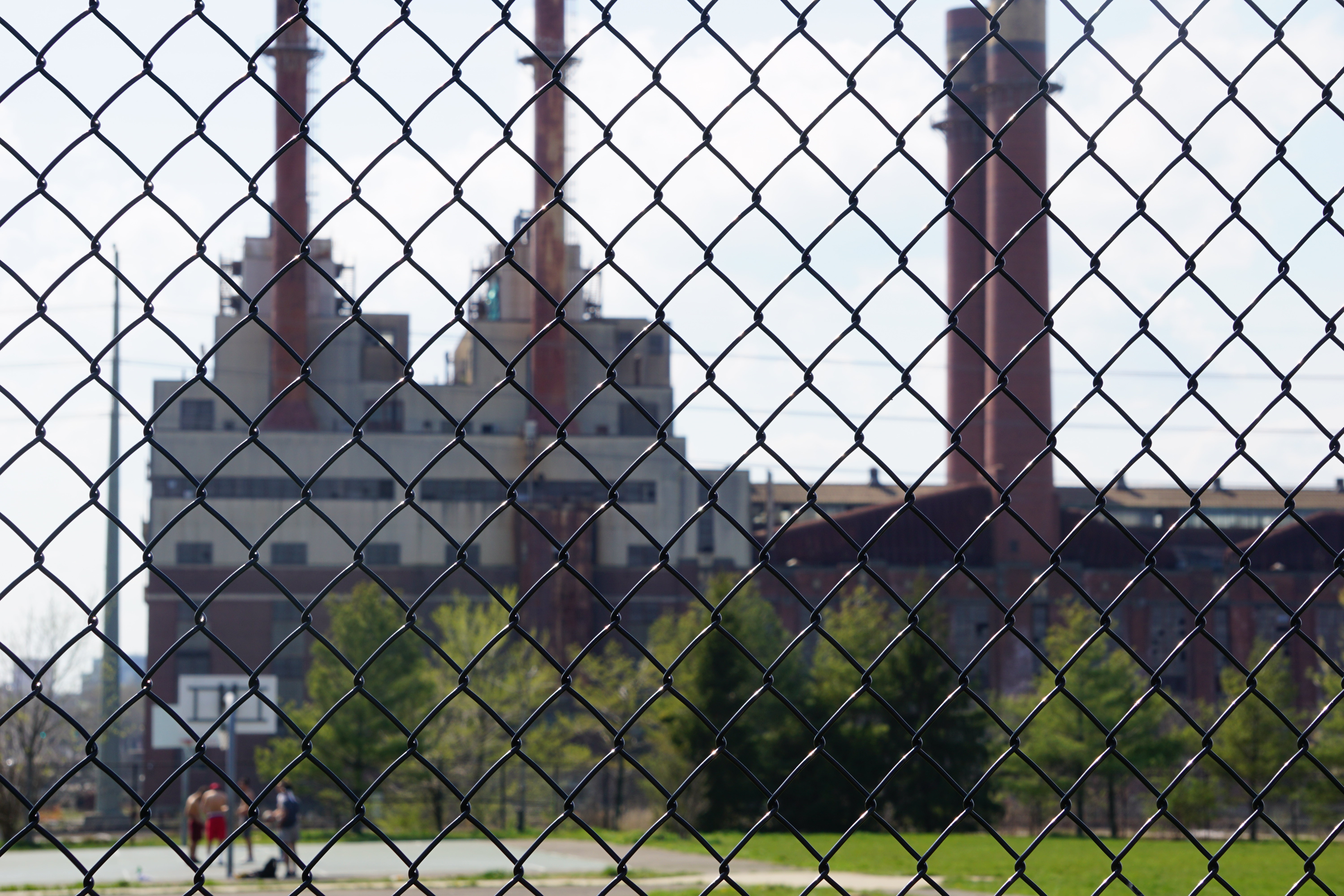
The hope is palpable inside John S. Martinez. But, walk out the front doors of the school, and a dystopian landscape appears. To the west of the school sits English Station, an abandoned thermal power plant fixed on the Mill River island.
Its smokestacks loom over the field where the kids go out for recess. Cross the street and the building across the parking lot is deserted, locked up with boarded windows.
Within a one-mile radius of the old factory and the school, there are at least 10 brownfields still needing to be cleaned up.
What Are Brownfields? “A brownfield is a property, the expansion, redevelopment, or reuse of which may be complicated by the presence or potential presence of a hazardous substance, pollutant, or contaminant. It is estimated that there are more than 450,000 brownfields in the U.S.”
EPA.gov
The global COVID-19 pandemic arrived quickly and ripped through communities, undermining the city’s 21st century medical and cultural infrastructure.
Everyone will be affected, but the marginalized will likely get hit first, according to New Haven City Engineer Giovanni Zinn, noting there is a major environmental justice element.
“The people that will suffer first and most, on the effects of climate change, are the people who are already at the margins of society.”
Giovanni Zinn, New Haven city engineer
Because New Haven sits along a coastline, sustainability means something different to impoverished communities than it would to a low-income population in the Midwest.
Both New Haven city officials and state entities are working to mitigate the risk of climate change further impacting all communities. In addition to Zinn, Rebecca French, director of the Office of Climate Planning at the Connecticut Department of Energy and Environmental Protection, said the department has a growing focus on how environmental concerns affect the state.
One major evolution, for instance, was the name change from the “Department of Environmental Protection,” which lacked the kingpin concern: energy use.
“I think it is the right move,” French said. “You can’t address climate change just from the environment protection side and you can’t address it just from the energy side. You need to bring those things together and work on it together.”
French said her department is trying to not only plan for the rising sea levels and storms on the horizon as part of the CTDEEP’s climate work, but also seek out and identify who will be affected the most.

“Damage occurs from big storms. We also have this creeping up of sea level rise and changes in precipitation patterns,” she said, noting there are certain populations most impacted by these environmental shifts.
“Those individuals and communities that were already dealing with a lot of socio-economic stressors feel the worst effects of climate change first and worst. They’re also the communities that are least responsible for it.”
Yet, before we can understand how communities are impacted, it’s crucial to understand the underlying issues.
Yet, before we can understand how communities are impacted, it’s crucial to understand the underlying issues.
One can look at the environmental issues as separate pieces of the same puzzle. There are concerns for water pollution and air pollution, land use and zoning laws.
And the best way to explain them is, not as a puzzle with individual pieces, but through a cycle. Let’s break it down.
Flooding: Rising sea levels
Nearly 570 low-lying coastal cities likely face rising sea levels, which will further put “over 800 million people at risk from impact of rising sea and storm surges,” according to C40 Cities, a global organization built up of cities focused on addressing and reversing climate change impacts.
New Haven is not immune to the inevitable repercussions of rising sea levels.
Climate Central tracks the potential rise of sea levels on a global scale and estimates by 2030, there will be a 30% chance New Haven will experience a flood of 6 feet or higher, an increase of 24% from their 2020 estimates
By 2040, that risk rises to 39% and to 63% by 2050. Just 20 years after that, Climate Central estimates that risk skyrockets to 100%.
2050 and 2060 may seem to be in the distant future, but many residents today will be alive during those decades and most will grow up with this burden.
While the city is still dealing with the consequences of historical decisions previous city planners made 50 to 200 years ago, Zinn said, New Haven engineers are already planning infrastructure to mitigate risks down the road save the city from rising seas.

One of the projects involves a partnership with the Army Corps of Engineers, who chose New Haven as a site for work in Connecticut, he explained. “It’s about a $130 million dollar project to build a wall and pump station down along the highway at Long Wharf to protect the district behind that.”
Additionally, Zinn and his team are building what they call “living shorelines,” which are human-built stabilized coastal edges comprised of naturally sourced materials, such as plants, sand or rock.
“Those living shorelines are very helpful because, first of all, you use natural, natural techniques to stabilize the shoreline and provide wave attenuation and energy dissipation. Also, they provide habitats and a lot of natural benefits there.”
Flooding: Heavy precipitation
That puts New Haven in a classic trap. Rising sea levels mean Long Island Sound will flood streets and intense rainstorms will dump water into the Mill, Quinnipiac and West rivers that flow into the sound.
The impact? Neighborhoods near any body of water will be inundated.
“We expect to receive significantly more precipitation and especially in short duration, high-intensity events — which are the absolute worst for a highly impervious dense urban core,” Zinn continued.
It has already happened, said Colleen Gala, who owns Fair Haven Furniture on the east side of New Haven. Gala’s business sits on River Street, only a few blocks away from the convergence of the rivers.
Gala said she has experienced occasional flooding after a bad storm. It has never come up to the door, but it’s flooded the basement. She said she hasn’t “had any specific conversation about” the effect of sea rise with the city.
Compounding the problem? The 19th and 20th century industries that powered New Haven’s growth. They left behind contaminated soil that runs off into the rivers when it rains, creating a toxic flood.
“We expect to receive significantly more precipitation and especially in short duration, high-intensity events — which are the absolute worst for a highly impervious dense urban core.”
Giovanni Zinn
In a 2017 article published by Jim Cameron in the New Haven Register, the Mill, Quinnipiac and West rivers are all polluted to some level in some places. The CTDEEP reported that the Quinnipiac River needs further study to determine the levels of pollutants it carries, otherwise known as its TMDL.
What is TMDL? TMDL stands for Total Maximum Daily Load, which is a “calculation for the maximum amount of a pollutant that a waterbody can accept and still meet the state’s Water Quality Standards for public health and healthy ecosystems.”
Epa.gov
Connecticut has 2,982 miles of rivers and streams and 30,438 acres of lakes, reservoirs and ponds, with another 612 square miles of bays and estuaries. Less than half – 47% – have been tested for pollutants as of 2016, according to the United States EPA.
Yet, community business owners seem unfazed by the statistics.
Gala said “environmental factors have very, very little impact” on her business.
While five years may have passed since this report, it is unlikely the data has shifted. If there is runoff from fields or lawns, which seep into the rivers, everything downstream can be contaminated. In most cases, it’s impossible to point to a single point of contamination for the pollutants, which makes it hard to fix.
Sean Duffy, a professor of political science at local Quinnipiac University and executive director of the Albert Schweitzer Institute, recognizes this issue. After living in the Greater New Haven area for over 20 years, he knows the local ecosystems pretty well.
Duffy recently initiated a project in line with Quinnipiac’s volunteer “Big Event” to mitigate the amount and number of contaminants flowing into the local rivers. For one, the Mill River, which flows right alongside the Albert Schweitzer Institute, is on “a cusp of being a healthy river and a very sick river,” he said.
With help from volunteers from Quinnipiac’s annual volunteer “Big Event” day and kids from the American Society for Civil Engineers chapter, the Institute built a rain garden and a berm and swale.
What is a berm and swale? “A vegetated swale is a grass-lined depression that slows down runoff water velocity and infiltrates the water into the soil. Berms are low earthen walls adjacent to ditches that can be used to help retain runoff in a designated area along the downhill side of the location.”
Fairbanks Green Infrastructure Group
“These are the kind of green infrastructure things to capture and hold water on the land — and to purify it there — rather than letting it run off into either the sewer system or into the Mill River,” Duffy said.
Basso said her students — specifically the fifth and sixth grades — focus heavily on water testing. The school works with New England Science & Sailing, a foundation based in Stonington, to get the kids looking at different sites around New Haven.
“We have the Mill River site, we usually do Edgewood Park — which has a smaller pond/lake feel — and we have go to the Lighthouse,” she said.
They are three different kinds of bodies of water, she explained, with unique compositions, habitats and species.
“Our kids are taught how to do water quality testing, how do you test for pH, how do you test for dissolved oxygen,” she said, and then they evaluate the results to determine if it is drinkable water for the community.
Pollution: Industrialization
New Haven, once the popping industrial stopping point for big corporations and plants, has since died out as the once-popular manufacturing hub. But, the remnants remain. Brownfields and abandoned warehouses and factories sit on or nearby the rivers, threatening pollution that nearby communities try to ignore.
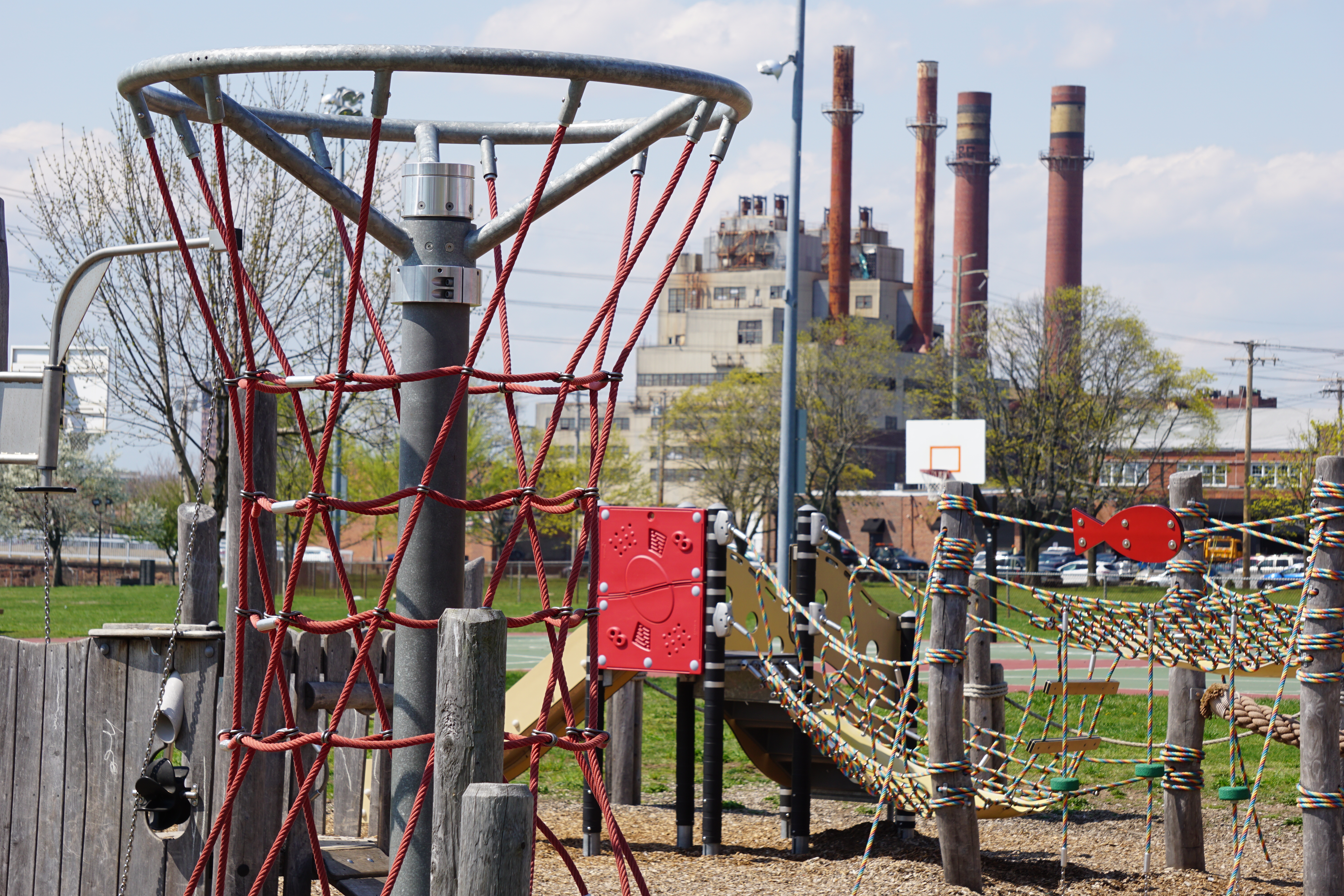
Think of that derelict thermal power plant called English Station on 510 Grand Ave. that opened in 1929. The United Illuminating Company closed it 30 years ago but it still stands on the Mill River, which passes it on the way to Long Island Sound.
Yet, it sits right on the Mill River, right before the river’s head opens out and spills into the Long Island Sound.
In 2013, the then-attorney general George Jepsen and CTDEEP issued an administrative order requiring current and previous owners to clean it up.
“English Station has been a potential source of pollution to Fair Haven and the waters of the state for too long. It must be cleaned-up by all those responsible for its present condition,’’ Jepsen said in the release.
The order demanded cleanup of polychlorinated biphenyls and other heavy metals, which could leak into the river. In light of the potential for future pollution, the cease-and-desist order also required the plant not be demolished until all cleanup takes place.
Eight years later, English Station sits there, vacant with broken windows, equipped with security cameras and locked gates to keep the public out.
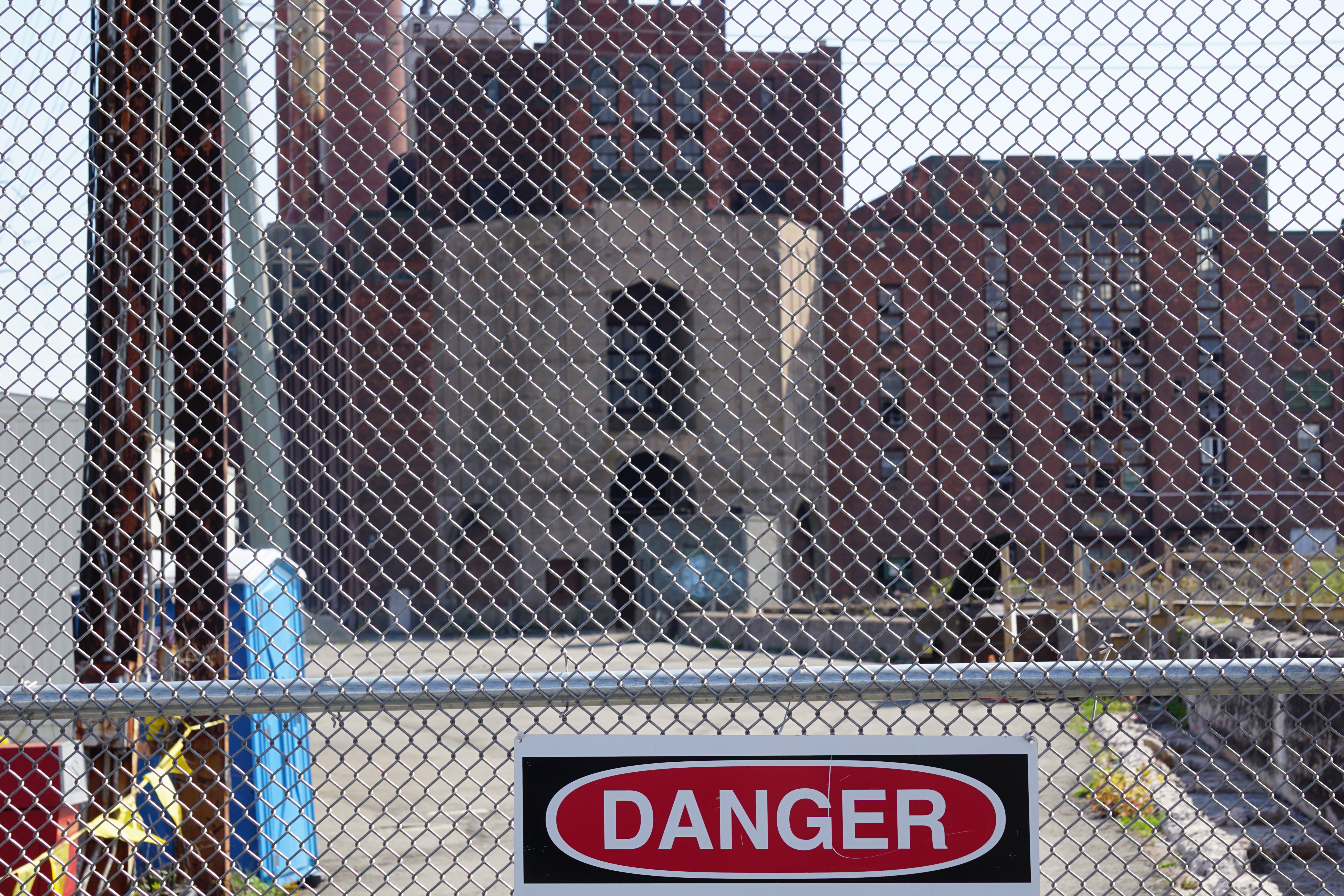

“God only knows what’s coming off of that planet at this point, just in the air, that we’re breathing every single day of our lives,” Basso said, adding the field her kids play on every day is sitting right next to the power plant. “Is there asbestos? I don’t know.”
English Station isn’t the only eye sore and river pollutant, on the east side of town. New Haven has 17 brownfields across its 20 square miles, but 10 are clustered on the east side of the city, according to the CTDEEPS Brownfield Inventory.
CTDEEP’s Connecticut’s Brownfield Inventory says there are only 17 throughout the entire city of New Haven.
There may be a reason for this, said Quinnipiac University associate professor of Legal Studies Sam Edwards, who highlighted researchers have noticed a global trend that west sides of cities are less industrialized than east sides.
“The west sides of cities tend to be the most affluent parts of cities while the east side is the poor side,” Edwards said, explaining it all boils down to prevailing winds from the northern hemisphere.
“During the age of industrialization, you built all these smokestacks, and the pollution went toward the east,” he said. “Even today, we can see a stark difference between the west side and the east side.”
City organizers quickly realized it wouldn’t make sense to put factories and warehouses and other industrial plants on the west side of town, where the winds would carry the emissions through the city.

The placement of the plants and factories created a systematic imbalance — and even years after they shut down and decades after deindustrialization, the imbalance perseveres.
A losing battle for green land, housing and food security: Zoning
Here are where zoning laws come into play, Duffy said, who added affluent areas are more likely to get “cleaned up.”
“New Haven has no money to keep up the parks,” Duffy said, adding high-income communities have active civic associations who spearhead fundraisers for local parks whereas poorer neighborhoods don’t have that same accessibility.
“We’ve been talking a little bit about that in terms of ‘who lives where’ and ‘what neighborhoods get the attention’ and ‘what neighborhoods have the good housing stock’ and ‘what [neighborhoods] have the rundown housing stock’ [versus] which ones have contamination and old industrial use,” Duffy said.

This is further evidenced by the Bigelow Boiler Company at 198 River Street, just blocks down from Fair Haven Furniture. The building was built in 1873 and, decades after it fell out of use, earned a place on the National Register of Historic Places in 1989.
The city promised to strategize for clean-up for years. Then, tropical storm Isaias hit, which demolished the roof of the old Bigelow plant and the city’s progress was cut short.
Now, the street in front of the decrepit building is walled off by roadblocks, and along the walls are warning signs, encouraging trespassers to steer clear. On the fence on the east side of the building is a sign, which reads “DANGER PCBS Polychlorinated Biphenyls.”
[ngg src=”galleries” ids=”1″ display=”basic_imagebrowser” display_view=”default”]Chadwick Schoeder, a senior political science and environmental studies major and researcher at University of Connecticut, said there could also be possible metal and petroleum contamination inside the building.
“If the site is not remediated there can be movement of the contaminants into ecosystems and the environment. This site is going to be completely inundated and should be used to help provide flood protection to surrounding development,” Schroeder wrote in his report, “Brownfields and Sea Level Rise: 2020.”
The EPA released a two-page report in September 2019, describing what it takes to clean up brownfield site. Depending on the location, more or less cleanup is needed with “industrial” sites requiring less work and residential sites needing more.
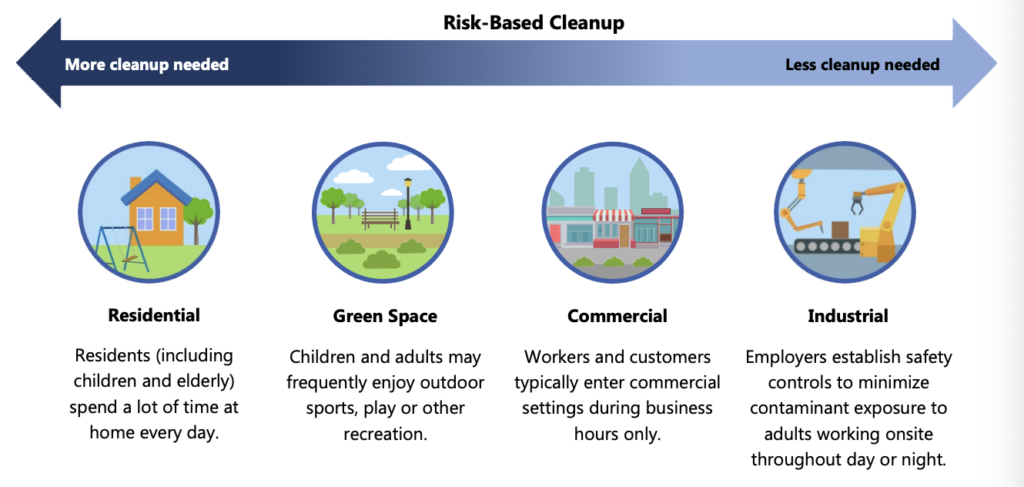
Throughout New Haven, cleanups are a mix of all four.
On top of the environmental woes, neighborhoods in Fair Haven face the constant threat of hunger. Food insecurity will only increase in the age of climate change as the world warms and cropland disappears.
What is food insecurity? “Food insecurity is defined [as] a lack of consistent access to affordable, nutritious food.”
Yale Hunger and Homelessness Action Project
The Yale Hunger and Homelessness Action Project noted the food insecurity rate in New Haven sits at 22%, twice the national average. And while there are a number of socioeconomic factors — outside of climate change — that contribute to an inability to access healthy and affordable food, environmental impacts cannot be understated.
“People are renting, they don’t have access to healthy land where they can garden,” Duffy said. “One of the things [the city of New Haven] is looking into is how can they encourage more urban farming and more access to land for people in poor, or more food insecure neighborhoods, which is pretty much two thirds of the city of New Haven.”
Basso said her school recognizes the issue and ensures students have a constant access to food.
“Whether you’re in person or remote, every student is offered breakfast and lunch every single day,” she explained, “So, if you are remote, we have people who are stationed at the doors, [then] they bring out breakfast and lunch for families. The same goes for our in-person kids.”
Where the solutions ultimately lie
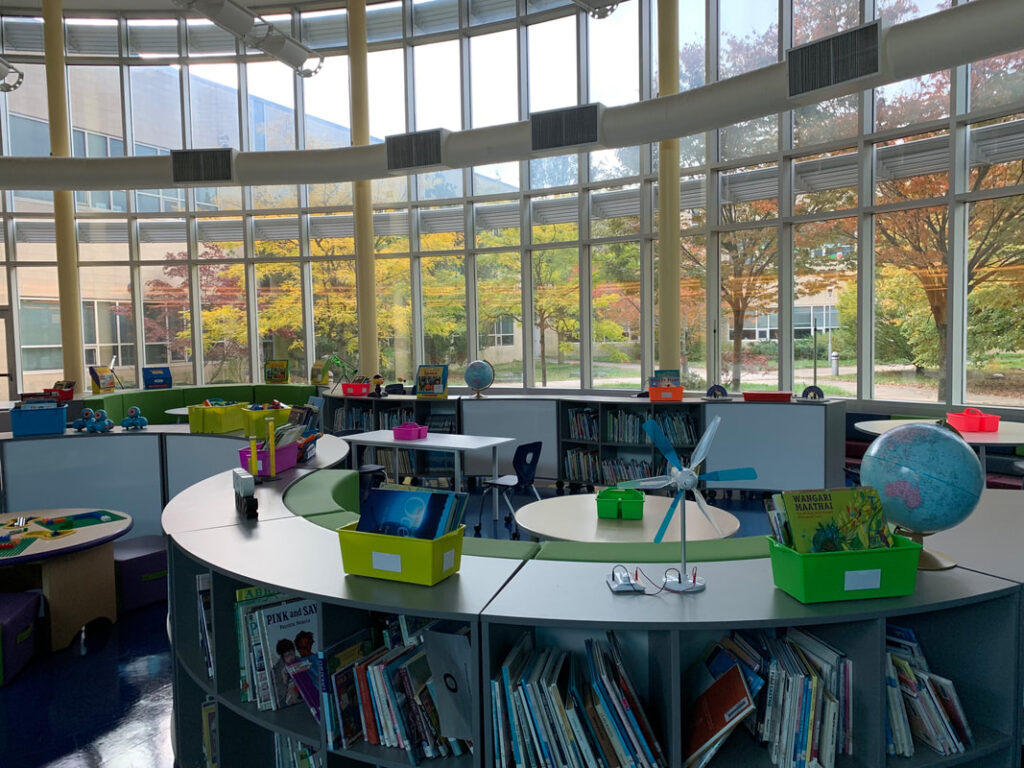
She gestured to the courtyard at John S. Martinez, calling it a concrete jungle. She’s sitting cross-legged on the bench outside, checking her phone as it nears 2:40, when students get let out. John St. Martinez is back in session almost full-time Monday, Tuesday, Thursday and Friday.
“One of our hopes is, like I said for this space, we are transitioning it into some sort of sustainable farming that goes directly back to the kids in our building,” she said. “I ordered a ton of like raised farm beds and like 800 pounds of soil.”
In addition to water testing, to perpetuate learning about the environment in the school, Basso said her students are also taught how to conduct different kinds of soil tests.
“We’ll have our kids do soil testing, just trying to again advocate for the fact that the water is polluted, the soil is polluted,” she said.
The air pollution is a different kind “of a beast,” Basso continued, explaining it’s much more difficult to measure and quantify the quality of the air.
The stigma of low-income is there and gets thrown in her students’ faces, she said, noting the school district works to encourage what it calls “courageous conversations,” breaking down the idea of racial injustice and systemic racism.
“We need to arm them with the skills they need to be proactive, instead of reactive, when it comes to those types of things, so that we don’t fuel the stigma. So again, we break it down, and we let people know that we are capable of anything in everything.”
Alyssa Basso
“We need to arm them with the skills they need to be proactive, instead of reactive, when it comes to those types of things, so that we don’t fuel the stigma,” Basso said. “So again, we break it down, and we let people know that we are capable of anything in everything.”
Inside the school, the kids get loud as they get ready to leave. She can only talk for another minute before she needs to help them get on their busses.
Change starts small, but it takes thinking big, she said. Even though her students have what society may consider the least access to resources, the school continues to “break down the stigma.”
“We just need to get our kids to advocate for it and use their voice. You can ignite and spark change in others based upon your actions,” Basso said.

